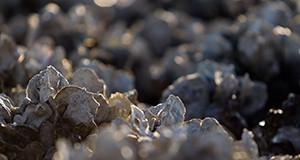Abstract
Florida is a tropical paradise that attracts marine enthusiasts and seafood lovers from around the world. Its extensive waterways not only offer unique areas for us to explore but also provide essential habitat for marine life, including marine bacteria that keep the habitat in healthy balance by breaking down organic matter and providing food for larger organisms. One type of marine bacteria known as Vibrio sometimes causes infections and seafood sickness in people with weakened immune systems, but Vibrio should not keep Floridians and visitors from enjoying their favorite activities because Vibrio infections are rare and easy to prevent. This 7-page fact sheet will help you ensure that your time on the water is as safe and enjoyable as possible. Written by Gabby Barbarite, Peter J. McCarthy, Holly Abeels, and Anita Wrightwill, and published by the Florida Sea Grant College Program, November 2015.
SGEF-228/SG140: Frequently Asked Questions about Vibrio in Florida (ufl.edu)
References
Centers for Disease Control and Prevention (CDC). 2014. "Cholera and other Vibrio illness surveillance (COVIS), summary data, 2014." Atlanta, GA: US Department of Health and Human Services. Retrieved September 28, 2018, from https://www.cdc.gov/nationalsurveillance/pdfs/covis-annual-summary-2014-508c.pdf
Centers for Disease Control and Prevention, National Center for Emerging and Zoonotic Infectious Disease, Division of Foodborne, Waterborne, and Environmental Diseases. 2013. "Vibrio Illness (Vibriosis), Vibrio parahaemolyticus." Retrieved June 5, 2015, from http://www.cdc.gov/vibrio/vibriop.html
Drake, S. L., A. DePaola, and L. A. Jaykus. 2007. "An overview of Vibrio vulnificus and Vibrio parahaemolyticus." Comprehensive Reviews in Food Science and Food Safety, 6(4): 120-144. https://doi.org/10.1111/j.1541-4337.2007.00022.x
Florida Department of Agriculture and Consumer Services (FDACS) Shellfish. Retrieved October 26, 2015, from http://www.freshfromflorida.com/Divisions-Offices/Aquaculture/Agriculture-Industry/Shellfish
Food and Drug Administration (FDA). 2012. Bad Bug Book, Foodborne Pathogenic Microorganisms and Natural Toxins. Second Edition. [Vibrio parahaemolyticus, p. 26; Vibrio vulnificus, p. 46]. Retrieved from http://www.fda.gov/Food/FoodborneIllnessContaminants/CausesOfIllnessBadBugBook/default.htm
Harbor Branch Oceanographic Institute at Florida Atlantic University. Vibrio Research and Practical Information. Retrieved September 28, 2015, from http://www.fau.edu/hboi/mbbr/vibrio.php
Oliver, J. 2005. "Wound infections caused by Vibrio vulnificus and other marine bacteria." Epidemiology & Infection 133(3): 383-391. https://doi.org/10.1017/S0950268805003894
Smith, D.C., P.H. Schmutz, and E.H. Hoyle. 1999. Foodborne Illness Related to Seafood. Clemson University Cooperative Extension, Home and Garden Information Center. Retrieved June 9, 2015 from http://www.clemson.edu/extension/hgic/food/food_safety/illnesses/hgic3660.html
WebMD. First Aid & Emergencies Cuts or Lacerations Treatment. Retrieved October 8, 2015, from http://www.webmd.com/first-aid/cuts-or-lacerations-treatment
Weiss, K.E., R.M. Hammond, R. Hutchinson, and C.G.M. Blackmore. 2011. "Vibrio Illness in Florida 1998-2007." Epidemiology and Infection, 139(4): 591-598. https://doi.org/10.1017/S0950268810001354
Wright, A.C., R. Goodrich-Schenider, M.A. Hubbard, and K.R. Schneider. 2009. Preventing Foodborne and Non-foodborne Illness: Vibrio parahaemolyticus. FSHN09-01. Gainesville: University of Florida Institute of Food and Agricultural Sciences. Retrieved June 5, 2015, from http://edis.ifas.ufl.edu/fs146

